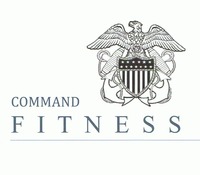The gasoline engine is your anerobic (carbohydrate burning) system. Athletes like basketball players or soccer players (my sport) whose sports demand sprinting, and explosive jumping as well as the necessity to traverse the court/field over long periods of time need to be able to switch between both engines/systems.
Let's say that you are a soccer player jogging up the field. Your heart is at a fairly low rate in your exercise range but all of a sudden a long lead pass rolls in front of you to the corner of the open field. You accelerate towards the ball with a defender in pursuit. Your heart rate starts to increase as you race towards the ball. Your muscles make the switch from the aerobic (diesel) system to the anerobic (gasoline) system as you reach the ball and pound a crossing pass across the front of the goal which your teammate heads into the corner of the net.
If you have been doing your interval training you'll be able to recover quickly as you jog back to center of the field for the kick off. If you haven't been doing intervals, you'll have trouble catching your breath and your legs will feel like lead because your muscles will not have the ability to efficiently switch between the two engines/systems. The bottom line is that you need to interval train so that your muscles so that they can efficiently switch between the two systems. You will love the results.
Do I really need to do intervals? See if any of these conditions describes you.
..
1. If your weight loss has leveled off, intervals may help you make a break through. There is no scientific evidence of this but I have seen numerous people that have leveled off in their weight loss doing steady-state cardio start interval training and start losing weight almost immediately.
2. If you are bored with your workouts, intervals may be exactly the thing you need to spice up your workout routine However, the biggest pay off may come from the motivation from seeing the rapid results that come from internal training.
3. The biggest indicator of whether or not you need interval time after strenuous activity. So the next time you climb a hill or a flight of stairs or run down the street or down a field, if it takes you more than two or three minutes to catch your breath, interval training is exactly what you need.
.
Clint Grimes, is a retired US Navy commander. He is certified by the California Interscholastic Federation and is currently the strength and conditioning coach for the boys soccer teams at El Toro High School in Lake Forest, CA.
You have permission to publish this article in your web sites, ezines or electronic publication, as long as the piece is used in its entirety including the resource box, all hyperlinks (HTML clickable) and references and copyright info.
